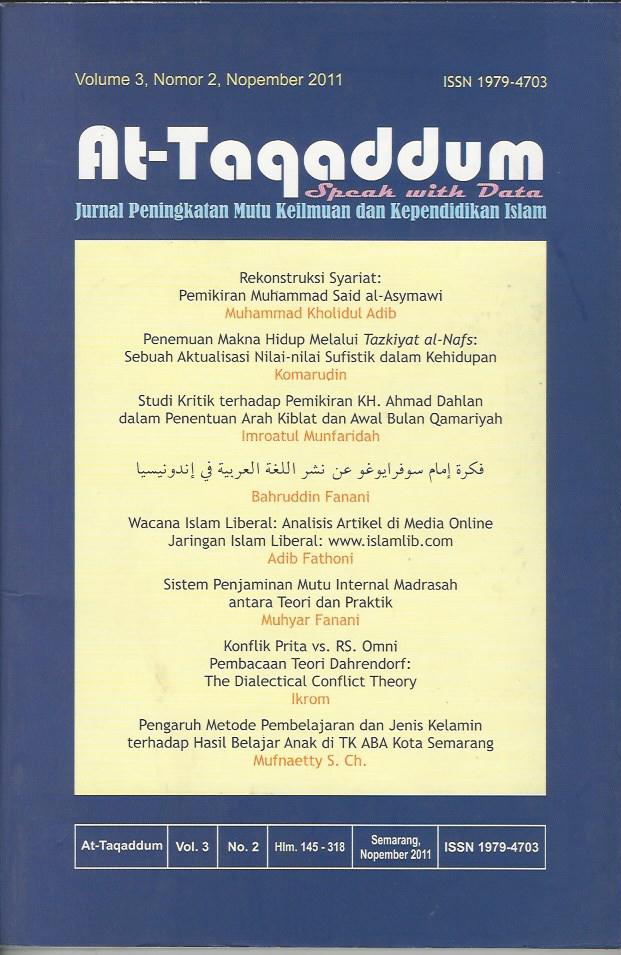REKONSTRUKSI SYARIAT : PEMIKIRAN MUHAMMAD SAID AL-ASYMAWI
DOI:
https://doi.org/10.21580/at.v3i2.491Keywords:
shariah, fiqh, Islamic law, maqashid ash-Shariat, ijtihad.Abstract
As the times, talk about sharia become an arena of heated debate in the discourse of Islamic thought. That's because sharia is understood formally-textual so often seen as not in conformity with the context of the times and changes. Though true sharia is a concept that also accompanies the development of civilization and humanity as a goal makes.This paper discusses one of the thought leaders who participated actively in the reform of Islamic law, ie, Muhammad Said al-Ashmawi, a former judge in Egypt. He comes to offer a few thoughts reconstruction of Shari'a that the effect is very positive for the development of Islamic legal thought appropriate to the context of today. According to him, there is an understanding of the Shari'a that needs to be clarified. The substance is related to the humanitarian and welfare, and it is more important than istilling symbols on the walls of the Shari'a legal-formal state legislation. So that needs to be used as a reference in its application is the maqashid ash-Shariat (the purposes of its own Shari'a). Research on al-Ashmawi thinking this could be a reference to be used as an argument or a slightly different view, so when looking at the context that occurred in Indonesia, al-Ashmawi thinking this could be a discourse of new thinking.
Downloads
Downloads
Published
How to Cite
Issue
Section
License
The copyright of the received article shall be assigned to the journal as the publisher of the journal. The intended copyright includes the right to publish the article in various forms (including reprints). The journal maintains the publishing rights to the published articles. Therefore, the author must submit a statement of the Copyright Transfer Agreement.*)

This work is licensed under a Creative Commons Attribution-ShareAlike 4.0 International License.
In line with the license, authors and third parties (readers, researchers, and others) are allowed to share and adapt the material. In addition, the material must be given appropriate credit, provided with a link to the license, and indicated if changes were made. If authors remix, transform or build upon the material, authors must distribute their contributions under the same license as the original.
________
*) Authors whose articles are accepted for publication will receive confirmation via email and send a Copyright Transfer Agreement.











